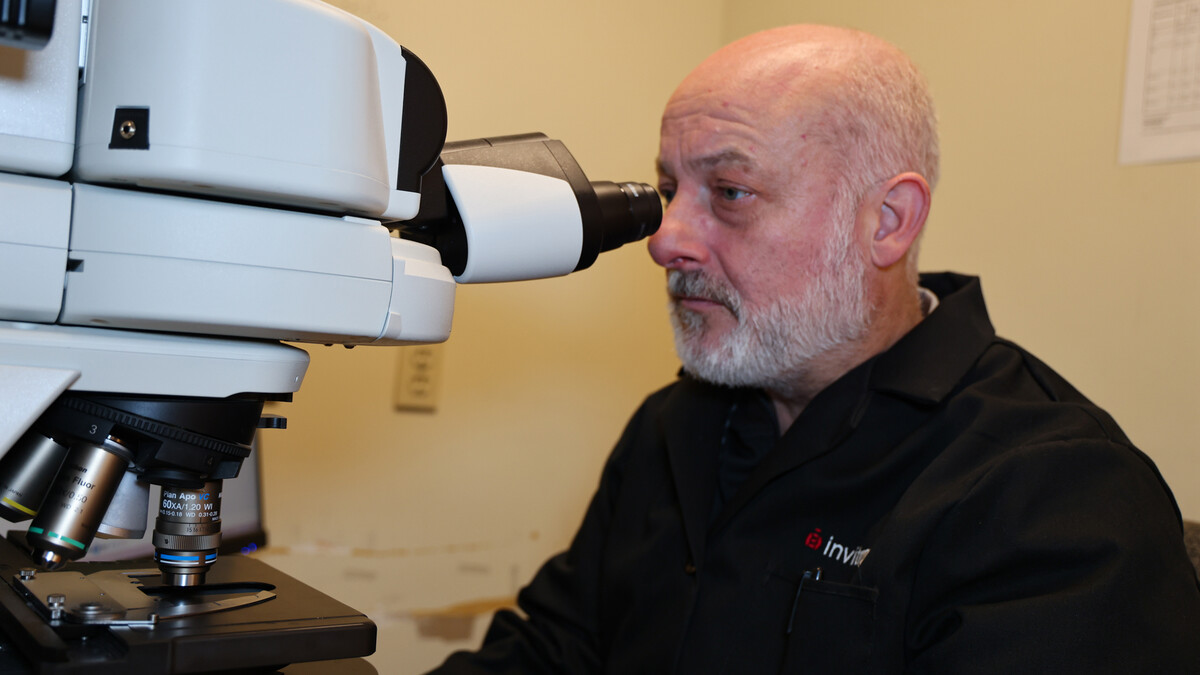
Lincoln, Neb. —Sorghum stands as one of the world’s leading cereal crops, growing in producer popularity due to its drought resistance at a time of major climate concern. The United States is No. 1 in growing the crop, primarily for animal feed and biofuel creation. But sorghum, here and worldwide, is under growing threat from an insect marauder, the sugarcane aphid.
The tiny creatures reproduce rapidly and can wreak major damage, depleting a plant’s nutrients by feeding on leaves and stalks. The aphid’s sticky “honeydew” facilitates mold on sorghum leaves and clogs harvesting equipment. Since 2013, the aphids have taken a strong foothold in sorghum-heavy Texas and Louisiana and of late have appeared in Kansas fields and in at least one Nebraska county.
Although Nebraska is not a main producer of the crop, “internationally and in the U.S. where sorghum is grown, you're seeing a lot of issues with sugarcane aphids,” said Joe Louis, the Harold W. Eberhard Professor of Agricultural Entomology at the University of Nebraska-Lincoln.
In recent years, Louis and his research collaborators at UNL and other institutions have studied the defense and signaling mechanisms that sorghum plants use to trigger their natural defenses against insect attack.
The subject is complex, with many factors still to be analyzed. In a new academic paper published in Molecular Plant-Microbe Interactions, Louis and colleagues explain their findings that a compound long identified with plant protection — jasmonic acid, a plant hormone — has a more complex relationship to sorghum defense than anticipated.
Jasmonic acid is a hormone generally produced when a plant comes under stress. Past practice showed that spraying jasmonic acid on sorghum plants deterred aphids from settling on the stalks. The research project confirmed that protective effect, but with a twist: Jasmonic acid did provide that protection for up to the first 24 hours after aphid release in the experiment. But thereafter, the high level of jasmonic acid encouraged the aphids to proliferate.
So, it turns out that jasmonic acid “has a dual role,” Louis said. “It serves as a deterrent at the initial stage. And at the later stage, it's actually helping the aphids to settle on the plants or colonize on the plants.” That’s because “some of the compounds or metabolites (metabolic byproducts) from the jasmonic acid are actually helping them to settle on the plants.”
Altering the level of jasmonic acid affected the sorghum plant’s accumulation of the sugars, fructose and trehalose, the research showed. A change in the sugar level affects the aphids’ growth and development. “We found that if we alter the jasmonic acid metabolism, there is a chance that it also affects the sugar accumulation in the plant, and that might be contributing to the resistance ability of the sorghum,” Louis said.
The project showed that “the jasmonic acid and these sugars are somehow connected, that when there is more jasmonic acid, there is less of fructose and trehalose,” Louis said. “And if they are less, the aphids can feed better on the plant. But if the level of the jasmonic acid is low, these sugars will increase. Which means that the aphids are consuming more of the fructose and trehalose, and that can affect the physiology of the insects” by impeding their growth and reproduction.
Continued research will expand understanding of the sorghum defense mechanisms against aphids, Louis said: “This project looked at one hormone, and there are other compounds or metabolites involved in providing defense. So, as a complement to this study, we are using proteomic and metabolomic approaches to understand the different factors that could contribute to sorghum defense against aphids.”
Identifying and understanding the full range of sorghum defense processes can provide “more tools we could use to protect the plants from aphids.”
“All plants have these innate defense mechanisms. We just need to explore those and find what are those hidden players in the plant,” he said. “If we can boost those innate defenses, we would have a better way to protect the plant, and we could reduce the use of pesticides. That would help us to produce a much cleaner environment.”
The lead author is Sajjan Grover, who spearheaded the project when he was completing his Ph.D. and subsequently his postdoctoral work in molecular plant-insect interactions at UNL. Grover is now a research scientist at Bayer’s crop science research and development facility in Chesterfield, Missouri.
The project was a continued UNL collaboration in plant-insect interactions with the U.S. Department of Agriculture’s Agricultural Research Service via contributions from ARS scientists Scott Sattler, based in Lincoln, and Zhanguo Xin, in Texas. Heena Puri, a Ph.D. candidate with the UNL Department of Entomology, is the other coauthor.
This work was supported by the National Science Foundation CAREER grant awarded to Joe Louis, which helped the team to expand the scientific understanding of a range of factors relating to plant defense against aphids.







